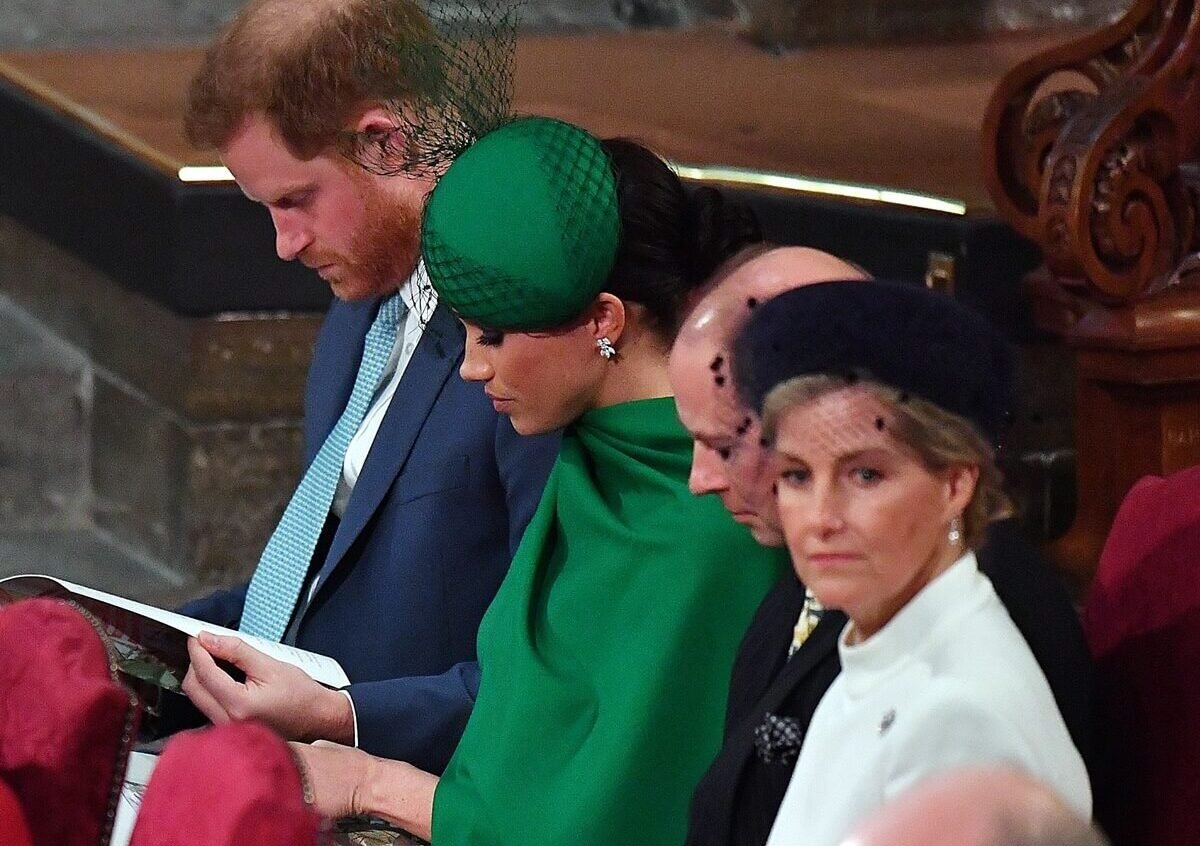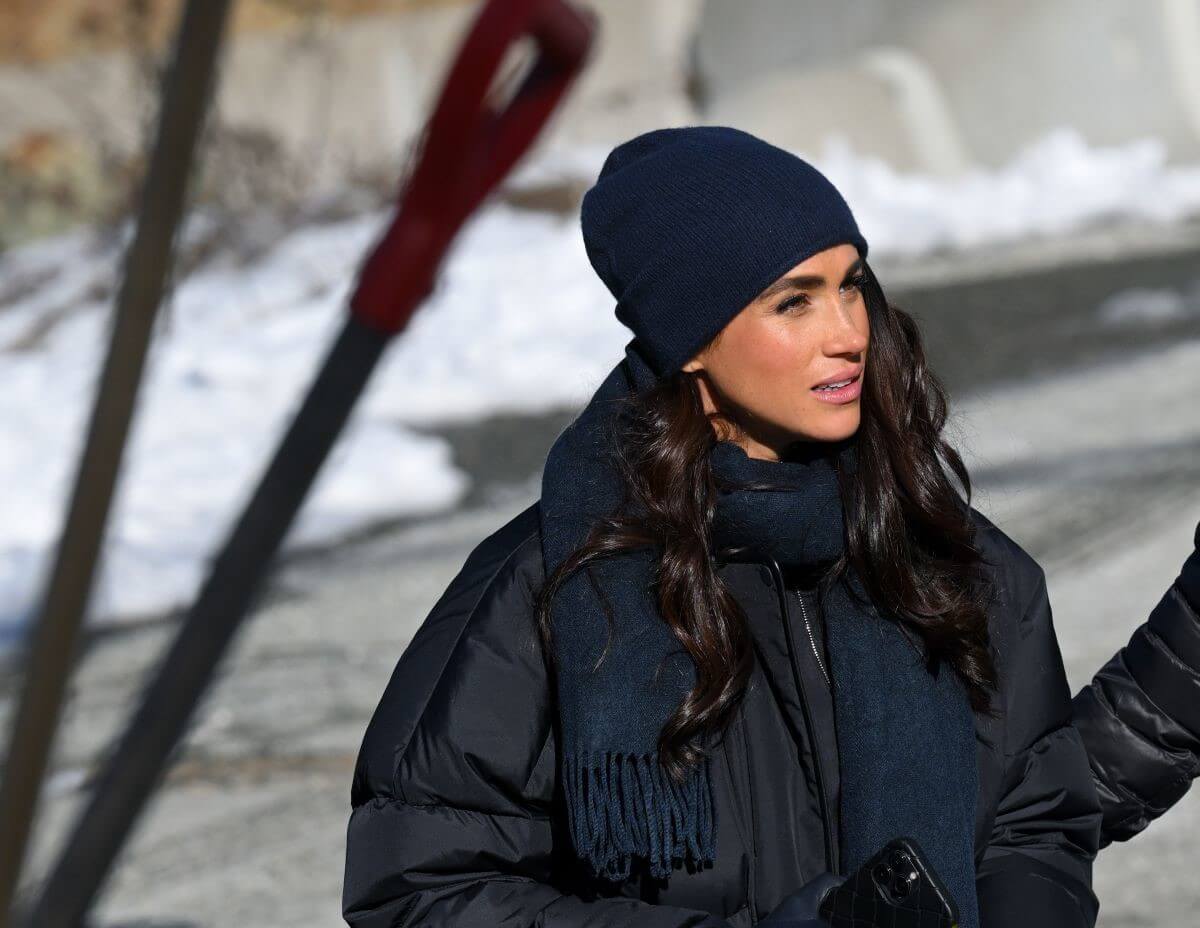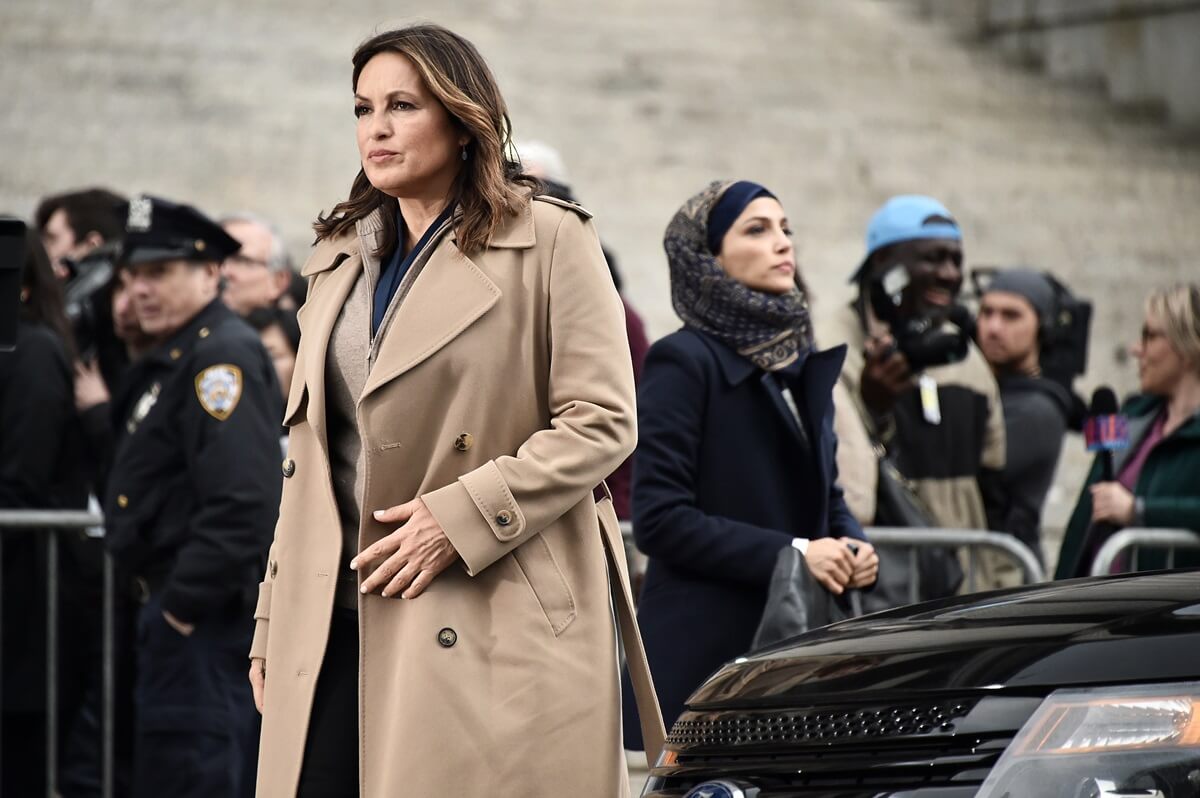How ‘1917’ Cinematographer Filmed the Whole Movie in One Shot
The acclaimed war movie 1917 looks like the entire movie occurs in a single shot with no cuts. Of course, it took more than 100 minutes or even a single day to make the film. Director Sam Mendes and cinematographer Roger Deakins still filmed impressively long takes and combined the shots seamlessly.
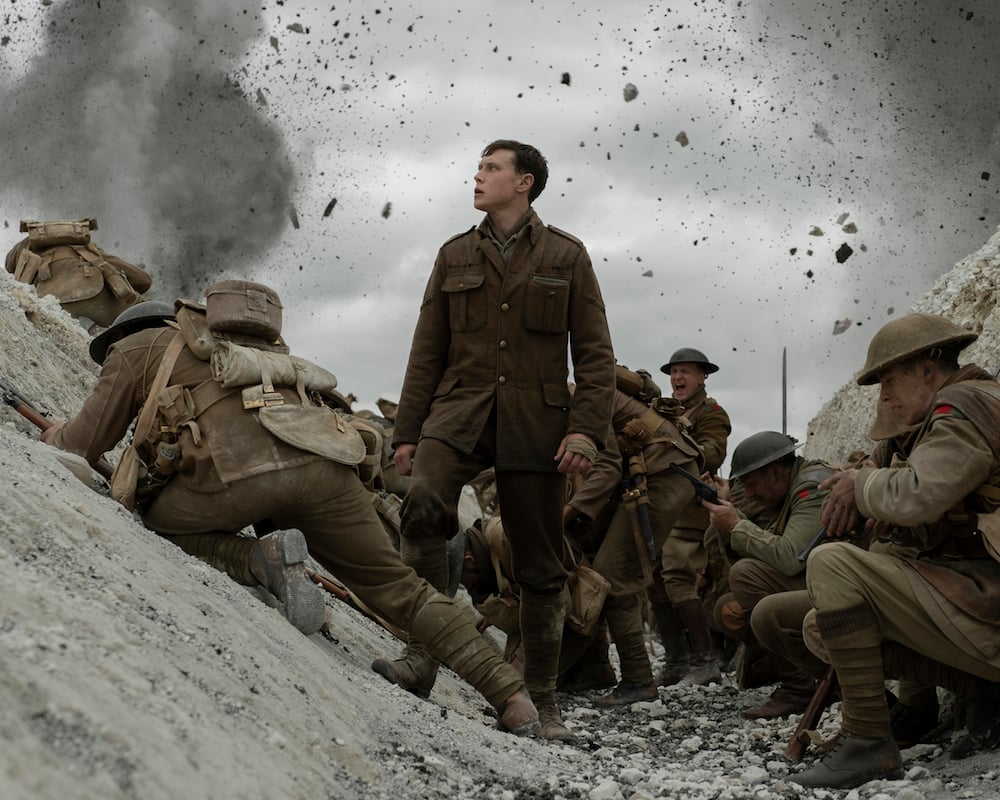
Deakins spoke about his work on 1917 after a screening of the film November 19. 1917 is now playing and has won Golden Globes, Producer’s Guild of America Awards and is nominated for BAFTAs and Oscars.
First, Roger Deakins rehearsed the ‘1917’ camera moves
You don’t just go onto set and start shooting. You don’t even begin rehearsing on the set. Roger Deakins set up rehearsals to practice the cinematography for 1917 at a studio.
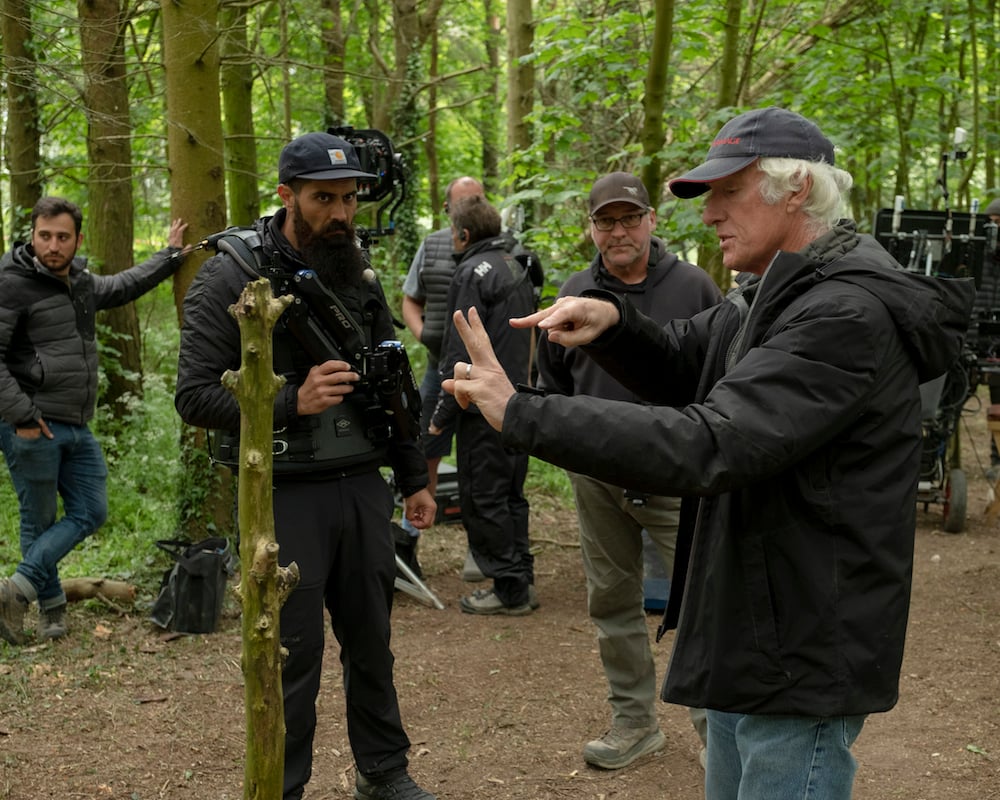
“We would go out in the field and mark out a line of trenches and, say, rehearse where the tree is in the beginning and how far do we want them to walk. The shots developed as we were doing that and the way the camera moved developed and some of the staging developed. In January/February we went to Salisbury Plains where the bulk of the shoot was and mapped out, say, the farmhouse and the orchard and everything with stakes. Mapped out the whole location and then played the scene with the actors.”
Roger Deakins, 1917 Q&A, 11/19/19
They built the sets for 1917 to the specification of the cinematography.
“We eventually shot it with a proper camera so I could test equipment as well,” Deakins continued. “That was so that we could move the orchard, make it bigger or smaller. We could move the barn where we wanted it and really lock down exactly what the camera was going to do.”
They had cameras built specifically for the film
Roger Deakins went to the Arri company and asked them to expedite their camera production so 1917 could be the first film to utilize their latest technology.
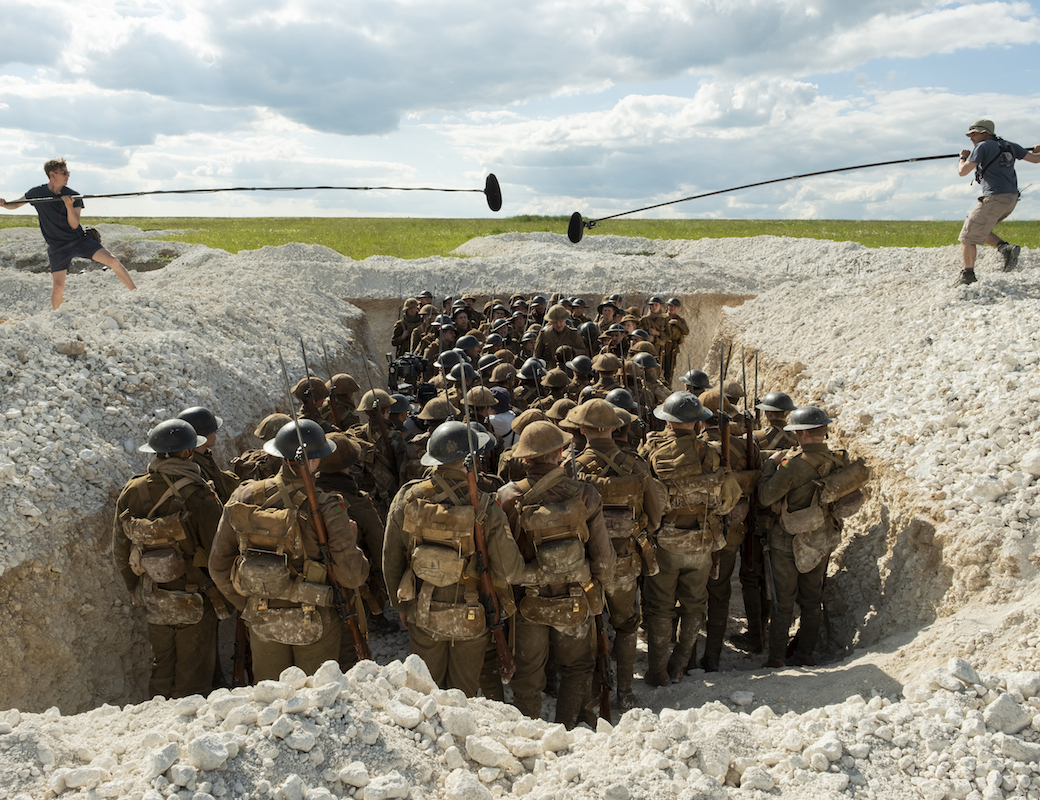
“My wife and I went to Munich and twisted their arm and said, ‘We think you’re going to make a mini version of this camera at some point. [They said,] ‘Well, yeah, but it’s going to be a year or two.’ We said, ‘Well, can it be by next February and can we have three?’ They came back to us and said yeah, okay because they realized they had to do it because everything was going to be shot on the same camera. It was such an opportunity for them and the last camera turned up about two weeks before we started shooting I think.”
Roger Deakins, 1917 Q&A, 11/19/19
They found the best camera operator for ‘1917’
Charlie Rizek had previously only operated camera on short films. When Roger Deakins met Rizek at Arri’s offices and saw his single take work, he hired him for 1917.
“[The camera] was on this rig called a Trinity which is Arri’s kind of steadicam version,” Deakins said. “It’s quite heavy but Charlie was demonstrating it for us at Arri in London. The singing soldiers in the forest is one of his. They’re long shots, like eight, nine minutes and it’s so much movement and some of it’s really delicate, and then he’s off running.”
They used wires
First they can hang the camera on wires and control it remotely, then remove the wires in post.
“Some of the things it’s like on a four-point wire,” Deakins said. The canal shot is on a wire but when he drops down off the bridge, the camera’s taken off the wire and then the grips run with it behind him up the stairs and into the lookouts.”
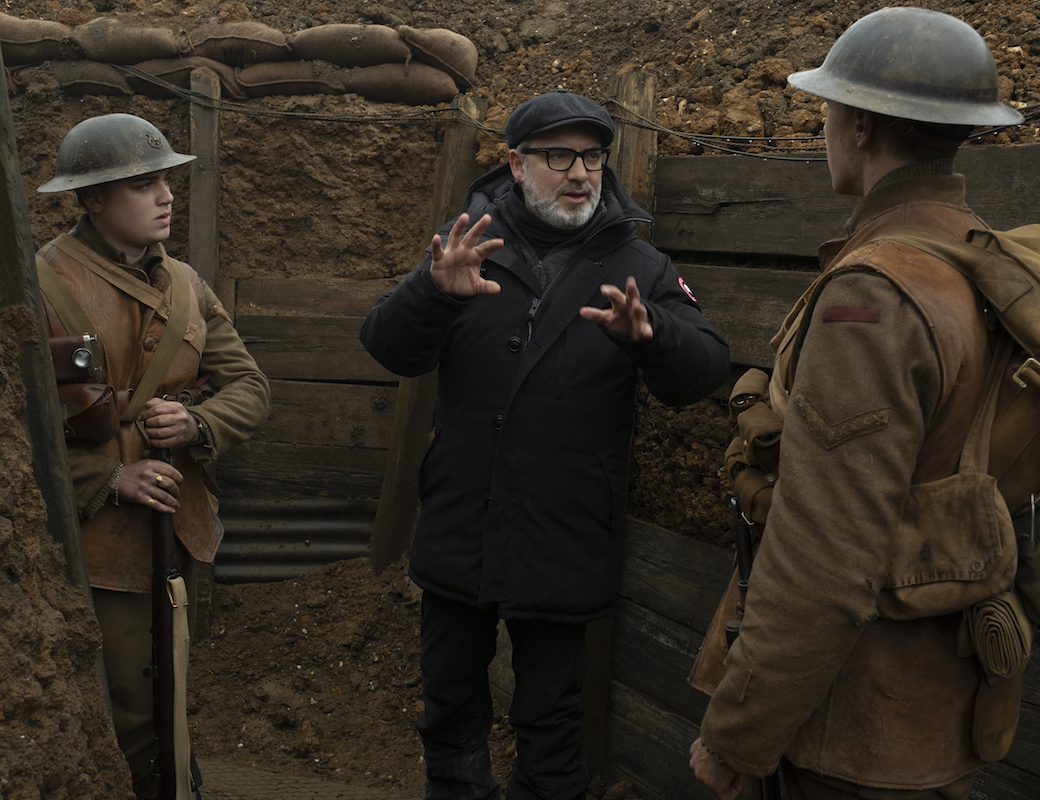
New gadgets helped keep the camera steady for those elaborate shots.
“ We were working with this remote stabilize head called the Stabileye which is a very lightweight little head which has saved our ass really,” Deakins said. “I don’t think we could’ve done it without it. One of the most complicated shots was the final run, when he’s running along in the battle. The camera is on a stabilizer. It’s all remotely operated. It starts on a 50 foot Technocrane down in the trench. Then it booms up with George [MacKay] as he comes up and looks down at the Captain and then he decides to go.”
Grips carried the camera the rest of the way
It takes a village to shoot 1917 in a single take. Then camera grips could pick up the camera and continue the shot. They would have to be dressed as WWI soldiers so they would blend in.
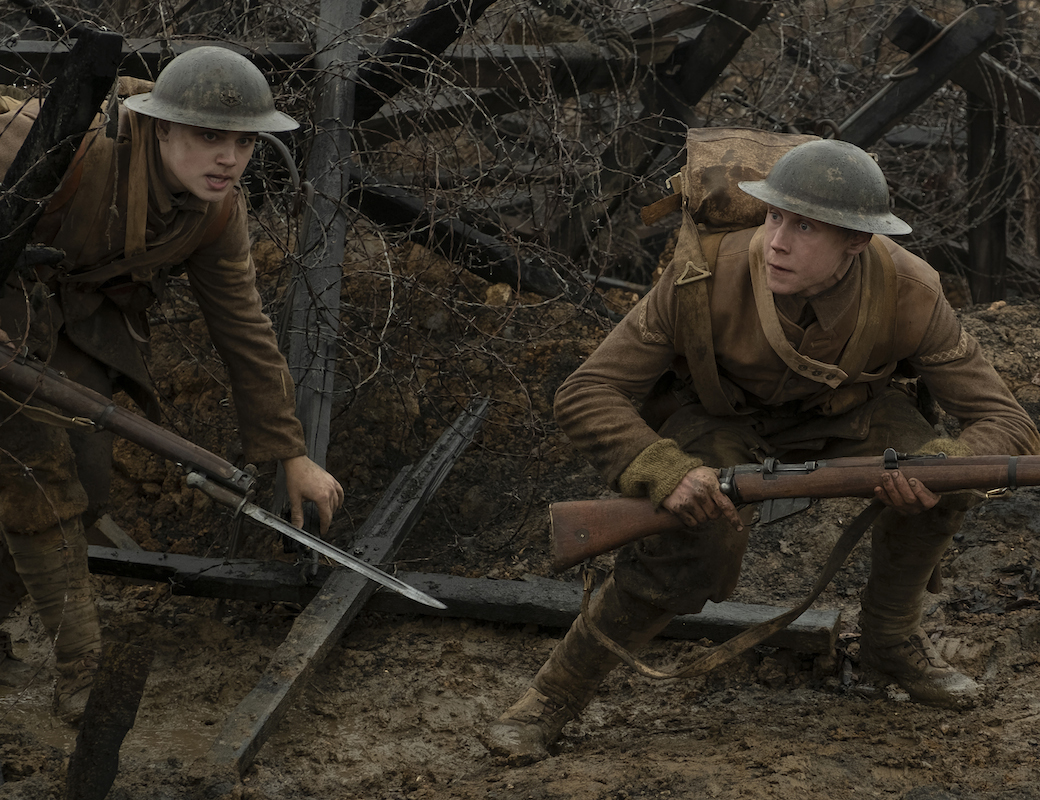
“As he does that, the grips take it off that Technocrane, carry it on a bar like this, walk back with him, get up to speed. There’s a tracking vehicle, a 22-foot Technocrane on it. They hook it onto that. The tracking vehicle takes off at speed. The two grips doing are dressed as soldiers so they run through the back of the shot. The tracking vehicle takes off with George, gets to the end of the trench where he goes down. The vehicle goes really tight in and then it booms out and takes him all the way down in the trench as the explosions go off. There’s 13 grips involved in that. Charlie and Pete [Cavaciuti], the two operators who did steadicam and Trinity were involved as well.”
Roger Deakins, 1917 Q&A, 11/19/19
